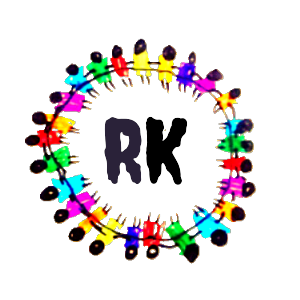Here’s a helpful guide on the most used Python libraries worldwide, why they are popular, and estimated usage based on developer surveys and real-world application.
These libraries are used by millions of developers across industries like data science, web development, automation, machine learning, and more.
🔢 Percentages are based on data from Stack Overflow Developer Survey, GitHub stars, and industry trends.
📊 1. NumPy
- Used for: Numerical computing, arrays, matrix operations
- Usage: ~65–70%
- Why Popular: Foundation for data science & machine learning libraries (like pandas, scikit-learn)
import numpy as np
a = np.array([1, 2, 3])
🧮 2. Pandas
- Used for: Data analysis, data frames, table operations
- Usage: ~60–65%
- Why Popular: Makes data handling like Excel but in Python; easy and powerful
import pandas as pd
df = pd.DataFrame({"name": ["Alice", "Bob"], "age": [25, 30]})
📈 3. Matplotlib / Seaborn
- Used for: Data visualization, charts, graphs
- Usage: ~55–60%
- Why Popular: Easy to create line plots, bar charts, and complex visuals
import matplotlib.pyplot as plt
plt.plot([1, 2, 3], [4, 5, 6])
🤖 4. Scikit-learn
- Used for: Machine learning (regression, classification, clustering)
- Usage: ~50–55%
- Why Popular: Beginner-friendly ML with ready-to-use models
from sklearn.linear_model import LinearRegression
🌐 5. Requests
- Used for: Web APIs, sending HTTP requests
- Usage: ~40–50%
- Why Popular: Extremely simple to make GET/POST requests
import requests
r = requests.get("https://api.example.com")
🛠️ 6. Flask
- Used for: Web development (micro web apps)
- Usage: ~35–40%
- Why Popular: Very lightweight and easy to learn for web development
from flask import Flask
app = Flask(__name__)
🔒 7. Django
- Used for: Full-featured web applications
- Usage: ~25–30%
- Why Popular: Built-in admin panel, ORM, user auth — perfect for startups
django-admin startproject mysite
🧪 8. Pytest / Unittest
- Used for: Testing Python code
- Usage: ~25–30%
- Why Popular: Easy to write and manage test cases for automation
🧹 9. BeautifulSoup
- Used for: Web scraping
- Usage: ~20–25%
- Why Popular: Clean and simple way to parse HTML and extract data
🎲 10. OpenCV
- Used for: Image processing, computer vision
- Usage: ~20%
- Why Popular: Used in AI projects, face detection, camera filters
📦 11. TensorFlow / Keras / PyTorch
- Used for: Deep learning
- Usage: ~30–35% among ML developers
- Why Popular: Used in AI apps, self-driving tech, advanced models
🖼️ 12. Pillow
- Used for: Image editing
- Usage: ~15%
- Why Popular: Resize, convert, and edit images easily in Python
📂 13. os / sys / datetime / json
- Used for: System operations, file handling, date/time
- Usage: ~90% (core Python modules)
- Why Popular: Built-in — no install needed, used in almost every project
📊 Summary Table of Most Popular Python Libraries
| Library | Main Use | Usage % | Why Popular |
|---|---|---|---|
| NumPy | Math & arrays | 70% | Fast and powerful base for data tools |
| Pandas | Data analysis | 65% | Excel-like + powerful operations |
| Matplotlib | Graphs and plots | 60% | Easy and flexible visualizations |
| Scikit-learn | Machine learning | 55% | Great for beginners + fast to use |
| Requests | HTTP / API calls | 50% | Easy API use and web requests |
| Flask | Micro web apps | 40% | Fast setup for small websites |
| Django | Full web framework | 30% | Rich features, admin panel included |
| BeautifulSoup | Web scraping | 25% | Clean HTML parsing |
| Pytest | Testing | 30% | Developer-friendly testing tools |
| OpenCV | Image processing | 20% | AI, camera, face detection |
| TensorFlow/Keras | Deep Learning | 30% | Popular in AI and neural networks |
| Pillow | Image editing | 15% | Easy image handling |
| os/sys/json | System & utilities | 90% | Core libraries used everywhere |
🧠 Final Tip:
You don’t need to learn all libraries.
Start with the ones you need for your current project or career path (like web dev, data science, etc.)

Leave a Reply